Twin Peaks and Brechtian Sensibilities in Modern Visual Media
Don’t start from the good old things, but the bad new ones.
—Bertolt Brecht
When Bertolt Brecht popularized the idea of epic theatre in the 1920s it was a culturally revolutionary act. Unlike naturalistic and psychological philosophies of theatre, which were devoted to creating illusions of verisimilitude and promoting realism, epic theatre exposed the inner workings—the artifice—of the production. While naturalistic theatre encouraged the viewers to lose themselves in the story, and to identify with the action taking place on stage, epic theatre was designed to make the audience feel detached and separate from what they were seeing. The ultimate goal of epic theatre was to cause the viewer to critically analyze the story at hand, as well as their positionality within the story.[1]
Inspired by the new media technologies of the time—film and radio—as well as Marxist principles of art for the masses, epic theatre brought the audience closer to the stage by filling in the then-standard orchestra pit. Epic theatre productions exposed sets and set constructions instead of hiding them. The soft lighting and spotlights of naturalistic theatre were replaced by harsh lighting throughout the production, and the crews were often visible.
In Brecht’s productions, actors would play multiple roles, sometimes without explanation. While Shakespeare had broken the fourth wall hundreds of years before, Brecht took it further and had actors vocalize stage directions and character descriptions. Brechtian theatre often featured actors playing inanimate objects, like the beggar’s wooden leg in The Threepenny Opera.
Epic theatre shifted heroes from protagonists who were one-dimensional and defined by strength and good looks, to messy leads with complicated backstories and strange behaviors on stage. In Brecht’s works, songs interrupted the narrative action, and the usual three-act arc did not determine intermissions and breaks.
At the core of Brechtian epic theatre is the principle of distanciation: a constant reminder to the audience that they are mere spectators, not participants in the production. What had, until the 1920s, been an immersive theatre experience (in which the viewer escaped from their life to join someone else’s story), suddenly became an alienating event that forced critical thinking, rather than association, from the audience.[2]
While the surrealist elements of David Lynch and Mark Frost’s Twin Peaks: The Return have received due attention, little has been said about the Brechtian epic theatre principles that Lynch/Frost employ. In many ways, these Brechtian principles are crucial to The Return, as they make possible several key socio-cultural points about gender, race, and society in America.
Brechtian Distanciation on Display
A careful review of Twin Peaks: The Return reveals a number of epic theatre strategies in action.
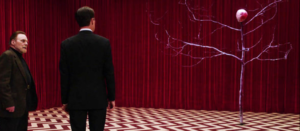
MIKE/Philip Gerard (Al Strobel), Good Cooper (Kyle MacLachlan), and the Evolution of The Arm, Part 1.
In earlier incarnations of Twin Peaks, Lynch/Frost cast an actor (Michael J. Anderson) to play a personified, walking, talking, and dancing amputated arm who prophesied from within The Red Room. In The Return, The Arm has evolved into a talking tree that has the power to communicate with humans. Like many Brechtian narrative tricks employed in Twin Peaks, The Arm functions as an important distanciation effect to situate the viewer clearly outside of Lynch/Frost’s world and to visually unsettle the audience.
Brechtian theatre principles are also hard at work in the glitchy and seemingly crude CGI that abounds in The Return: the stuttering Purple World; the quaking monster in the glass box. These visual metaphors serve to distance the audience from the action on screen and to remind us over and over again that what we are watching is not real.
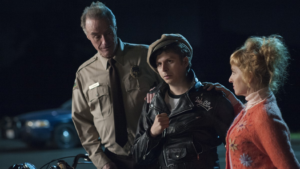
Deputy Andy Brennan (Harry Goaz), Wally Brando (Michael Cera), and Lucy Moran-Brennan (Kimmy Robertson), Part 4.
Outright audience alienation is further evident in Wally Brando’s (Michael Cera) meandering monologue. The awkward pose of Wally’s body leaning against his Triumph, flanked by his mother and father in a satiric reference to the Holy Trinity, as well as his absurd observations about life on the road, contribute to a kind of anti-immersion in Twin Peaks. From a Brechtian perspective, Wally’s prolonged soliloquy slows down the pace of the show, and in fact sets a new pace for a viewing paradigm: this is a narrative that will take its own time.
FBI Deputy Director Gordon Cole’s (David Lynch) regularly yelled pronouncements of where the action is moving—“WE’RE GOING TO BUCKHORN, SOUTH DAKOTA!”—is reminiscent of Brecht’s actors reading blocking notes on stage. And the fact that Kyle MacLachlan now essentially plays three different characters (Agent Dale Cooper, Cooper’s Doppelgänger, and Douglas Jones) is Brechtian to its core.
A particularly unnerving example of Brechtian distanciation is experienced through Lynch’s propensity to focus overlong on everyday objects, to the point of viewer discomfort. A light socket, a car lighter, a key, an electricity pole, or an open doorway suddenly become quietly menacing as the camera lingers, giving us no further context or indication as to the object’s significance. When/if the object’s significance is revealed, the viewer finds themselves in a state of astonishment that such a banal thing would suddenly take on new, often-troubling and violent symbolism. Raise your hand if you don’t quite trust light sockets anymore since the new hours of Twin Peaks. And raise your hand if a red traffic light swaying in the breeze gives you ominous chills.
In Part 6 of Twin Peaks: The Return, Frost/Lynch use this distanciation method to pause on a streetlight as it cycles through green, yellow, and red. Later, that same streetlight is the site of a gruesome hit and run accident that kills a child on screen. The murder of children is one of the remaining on-screen taboos that filmmakers rarely touch, and Lynch/Frost do not shy away from displaying this horrific event in its brutality. The event itself is a stark moment of audience alienation. The sense of estrangement grows as we watch a crowd of people surround the mother and her dead son; no one calls an ambulance or the police. They just watch, powerless, as we are watching helpless as well—nothing creates a distanciation effect more powerfully than having to admit that nothing happening in front of your eyes is in your control.[3]
Like Brecht, Lynch/Frost are masters of subverting expectations, and the later parts of The Return provide powerful examples. By Part 7, Lynch/Frost have conditioned viewers to believe that each hour of The Return ends with a live song performed in The Roadhouse. While these musical interludes—also a parallel to Brechtian theatre—are themselves interruptions of the action, in Part 7 Lynch/Frost deny the audience the song. Instead, the episode ends with a three-minute scene of a man sweeping The Roadhouse’s filthy floor. An important phone call interrupts the sweeping and furthers the plot in a quiet but key way. The harsh buzz of the telephone over the hypnotic sweeping yet again jolts us from our position of relative comfort, prompting us to stay alert and aware of what is happening before us.[4]
Then, in Part 8 of The Return, a song performed at The Roadhouse interrupts the action at the beginning of the episode. When will The Roadhouse songs interrupt the action in future episodes? And to what end? We don’t know. As Brechtian theatre in action, our complacency as viewers to organize the narrative in ways that are convenient and cohesive is now shattered.
The Return’s Part 8 is a masterpiece hour of surrealism, but it is also an apex of Brechtian theatre principles.
The hour features Brechtian harsh lights, discordant sounds, and total changes of scenery and visual tone without explanation. In a beautiful synchronicity of Brechtian principles, key events in that hallucinogenic hour even take place in an actual theatre, with important tableaus taking place on an art deco stage where an actual production of souls is in progress.[5]
Roland Barthes uses the term “dystaxia”[6] to indicate a disturbance of linearity, also relevant to the Brechtian method. Evidence from Part 8 of The Return seems to indicate that events that occurred in Part 1—namely the black and white scene between Original Dale Cooper (Kyle MacLachlan) and The Giant—occurred outside of time. These revelations serve to disrupt the audience’s perception that we know, concretely, what is happening, and when these events are happening. We are unmoored while watching Twin Peaks: The Return, and the confounding can be difficult to stomach[7].
The third season of Twin Peaks employs principles of Brechtian epic theatre in a new visual medium that extends past television screens to a variety of streaming devices—an innovation of modern storytelling that Brecht would have loved for the access it provides to the masses.
Epic theatre forces the viewer to acknowledge their positionality within the larger dialectic. The discordant aspects of epic theatre prevent viewers from escaping into the narrative; they must analyze the story instead. Ultimately, the goal of Brechtian epic theatre is to alienate the audience to such a degree that the underlying social issues exposed by the production cannot be ignored.[8]
A deeper analysis of Twin Peaks as Brechtian epic theatre situates the myriad accusations of misogyny[9], sexism[10], and racism[11] lodged at Lynch/Frost in a new and reflective socio-cultural context. The distanciation and audience alienation effects employed in The Return encourage the viewer to look past the presentation on screen to the social issues being actively exposed.
Two of the oft-repeated gestures summarizing Twin Peaks are “Who killed Laura Palmer?” and “Full of secrets.” One of the most important verbal gestures uttered by Albert Rosenfeld (Miguel Ferrer) often gets sidelined: “The evil that men do.”
The evil that men do is no metaphor for mankind, or humanity, as a whole. It speaks specifically to the male of the human species; the male who inflicts horrors upon the female in instances of gendered, often sexual, violence. In a world where one in three women will be raped in her lifetime, and virtually every woman has stories to tell of sexual assault, and cyber/street harassment, this distinction is important to recognize.
The many incidents of (often graphic) violence against women in Twin Peaks is not inherently misogynistic, but it is reflective of the misogyny that continues to terrorize women in real life as well as on screens. The depictions of violence against women, the hypersexualization of women, and gendered sexual objectification in Twin Peaks are not meant to titillate the viewer. These evils men do are presented as points of social critique, and they further potential moments for the audience to distance themselves from the action on screen and reflect. Unlike shows like Game of Thrones that present sex and violence as official points of male arousal—pandering to the “perv side of the audience”[12]—Twin Peaks is an indictment of misogyny, a calling out of the viewer’s willingness to objectify women.[13]

The original cast members from promo/teaser materials, from left to right: Nadine Hurley (Wendy Robie), Big Ed (Everett McGill), James Hurley (James Marshall), Laura Palmer (Sheryl Lee), Gordon Cole (David Lynch), Cooper (Kyle MacLachlan), Audrey Horne (Sherilyn Fenn), Shelly Johnson (Mädchen Amick), Bobby Briggs (Dana Ashbrook), Norma Jennings (Peggy Lipton).
The same goes for the show’s overwhelming whiteness. Twin Peaks has come under fire as being racist in its almost all-white casting, as well as its Orientalist[14] portrayals of Asian people and culture. Once upon a time, Twin Peaks was revolutionary in positioning social problems in a middle-class and predominantly white context; it was the first show of its kind to do so. Unfortunately, even though 25+ years have passed since the end of Twin Peaks season two, racial equality is not that much further along today, and in many ways, on account of the Trump regime, is actively regressing. Trump’s slogan “Make America Great Again” harkens back to a pre-civil rights era in which whiteness was legally, socially, and culturally considered superior.
I argue that from a Brechtian perspective, Lynch’s casting is not racist, but it does display the dominant and hegemonic white paradigm of visual media in the United States. Consider how pathologies like drug addiction, domestic and gendered violence, as well as gun crimes on screen are exclusively presented in white contexts within the Lynch/Frost world of The Return. This is an enormous break from the majority of visual media, whether it is fiction or non-fiction. Yes, it’s certainly a fine line between reflecting socio-cultural conditions and reproducing them. Here, intention is key. Lynch has made a career of exposing the seething underbelly of white America, and Twin Peaks: The Return is a continuation of that project.
Brechtian theatre, and Lynch/Frostian filmmaking as a result, encourages the viewer to utilize their critical thinking skills, and maintain an appropriate emotional and psychological distance from the art. This distance allows the audience to see the work for what it is: an epic journey into the heart of an American-specific darkness.
[1] Walter Benjamin, Understanding Brecht, (New York: Verso, 2003), 21.
[2] Walter Benjamin, Understanding Brecht, (New York: Verso, 2003), 115.
[3] Walter Benjamin, Understanding Brecht, (New York: Verso, 2003), 5.
[4]Walter Benjamin, Understanding Brecht, (New York: Verso, 2003), 3.
[5] Walter Benjamin, Understanding Brecht, (New York: Verso, 2003), 5.
[6] Roland Barthes, Image-Music-Text, (New York: Hill and Wang, 1978), 118.
[7] Walter Benjamin, Understanding Brecht, (New York: Verso, 2003), 5.
[8] Walter Benjamin, Understanding Brecht, (New York: Verso, 2003), 100.
[9] Anat Sela-Inbar, “The Misogynistic ‘Twin Peaks’: Nothing Has Changed,” Haaretz, accessed July 31, 2017, http://www.haaretz.com/life/television/.premium-1.794131.
[10] Caitlin Gallagher, “The Brutal Treatment Of Women On ‘Twin Peaks’ Strips Away Some Of Its Charm,” Bustle, accessed July 31, 2017, https://www.bustle.com/p/the-brutal-treatment-of-women-on-twin-peaks-strips-away-some-of-its-charm-61204.
[11] Niela Orr, “It Is Happening Again,” The Baffler, accessed July 31, 2017, https://thebaffler.com/bread-and-circuses/it-is-happening-again-orr?utm_content=buffer31cb8&utm_medium=social&utm_source=twitter.com&utm_campaign=buffer.
[12] Bethany Jones, “‘Game of Thrones,’ Sex and HBO: Where Did It Go Wrong For TV’s Sexual Pioneers?,” IndieWire, accessed July 31, 2017, http://www.indiewire.com/2014/06/game-of-thrones-sex-and-hbo-where-did-it-go-wrong-for-tvs-sexual-pioneers-214130.
[13] Consider Benjamin’s comment on Brecht’s methods, “Brecht strips the conditions under which we live of their drapery of legal concepts. Their human content emerges from under them naked, as it will go down to posterity. Unfortunately, it has a dehumanized look. But that is not the satirist’s fault. To lay bare his fellow citizen is his task.” Walter Benjamin, Understanding Brecht, (New York: Verso, 2003), 83.
[14] Hanh Nguyen, “‘Twin Peaks’: Diane’s Style Continues the Problematic Orientalism From the Original Series,” IndieWire, accessed July 31, 2017, http://www.indiewire.com/2017/06/twin-peaks-diane-asian-orientalism-stereotype-exoticism-1201844974.



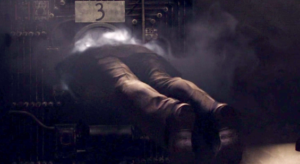
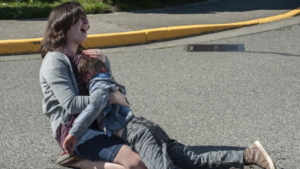
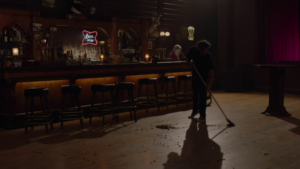
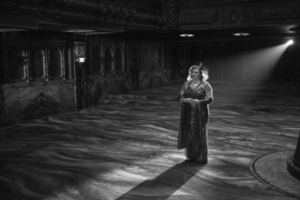
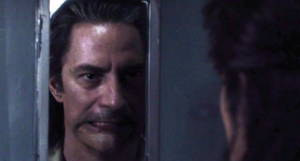

Dilettante Mail
Get updates from us a few times a year.